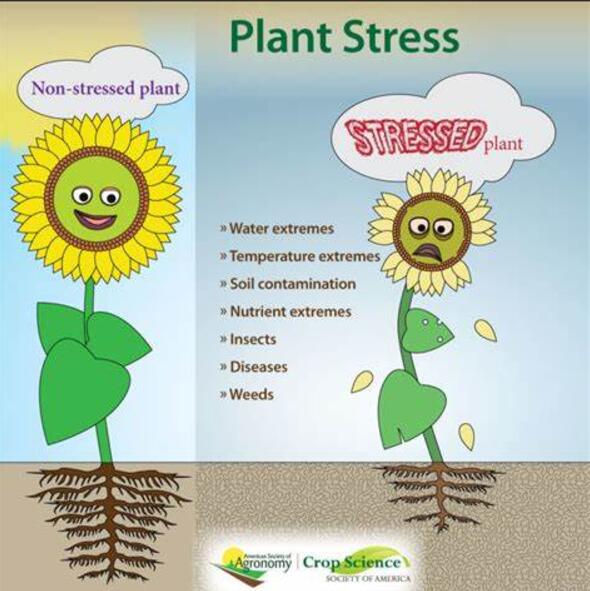Graphene oxide improves the tolerance of Tartary buckwheat to continuous cropping by coordinating the antioxidant defense system and endogenous hormone levels
IF 6.8
Q1 PLANT SCIENCES
引用次数: 0
Abstract
Continuous cropping obstacles seriously restrict the yield of Tartary buckwheat. Graphene oxide (GO) is shown to play an important role in defense mechanism to plant abiotic stress. However, the relationship between GO and improving continuous cropping tolerance is unclear. The main objective of this study was to analyze the physiological mechanism of GO in alleviating continuous cropping injury. A 2-year field experiment was conducted on Tartary buckwheat (Jinqiao 2) to investigate the characteristics with five GO treatments, namely, 0 (control), 25 (G1), 50 (G2), 100 (G3), and 200 mg L–1 (G4). With increasing the GO application concentration, the rhizosphere soil nutrient content, root morphology and activity, photosynthetic characteristics and chlorophyll content, antioxidant enzyme activities, osmotica and auxin (IAA) content, agronomic traits, and yield initially increased and then decreased. The contents of malonaldehyde, superoxide anion free radical, and abscisic acid (ABA) initially decreased and then increased. Compared with CK, the yields subjected to continuous cropping and treated with G1, G2, G3, and G4 were 1.28, 1.58, 1.43, and 1.16 times, respectively. GO treatment, especially G2 treatment, can improve the tolerance and increase the yield of Tartary buckwheat to continuous cropping, and it is suitable for widespread use by farmers in Tartary buckwheat production.
氧化石墨烯通过协调抗氧化防御系统和内源激素水平提高鞑靼荞麦对连作的耐受性
连作障碍严重限制了鞑靼荞麦的产量。氧化石墨烯(GO)在植物非生物胁迫的防御机制中发挥着重要作用。然而,氧化石墨烯与提高连作耐受性之间的关系尚不清楚。本研究的主要目的是分析 GO 在减轻连作伤害方面的生理机制。在鞑靼荞麦(金桥 2 号)上进行了为期 2 年的田间试验,研究了五种 GO 处理的特性,即 0(对照)、25(G1)、50(G2)、100(G3)和 200 mg L-1 (G4)。随着 GO 施用浓度的增加,根圈土壤养分含量、根系形态和活性、光合特性和叶绿素含量、抗氧化酶活性、渗透压和辅助素(IAA)含量、农艺性状和产量先增加后减少。丙二醛、超氧阴离子自由基和脱落酸(ABA)的含量先降后升。与 CK 相比,连续种植并经 G1、G2、G3 和 G4 处理的产量分别是 CK 的 1.28、1.58、1.43 和 1.16 倍。GO处理,尤其是G2处理,能提高鞑靼荞麦对连作的耐受性并增加产量,适合在鞑靼荞麦生产中广泛使用。
本文章由计算机程序翻译,如有差异,请以英文原文为准。
求助全文
约1分钟内获得全文
求助全文
来源期刊

Plant Stress
PLANT SCIENCES-
CiteScore
5.20
自引率
8.00%
发文量
76
审稿时长
63 days
期刊介绍:
The journal Plant Stress deals with plant (or other photoautotrophs, such as algae, cyanobacteria and lichens) responses to abiotic and biotic stress factors that can result in limited growth and productivity. Such responses can be analyzed and described at a physiological, biochemical and molecular level. Experimental approaches/technologies aiming to improve growth and productivity with a potential for downstream validation under stress conditions will also be considered. Both fundamental and applied research manuscripts are welcome, provided that clear mechanistic hypotheses are made and descriptive approaches are avoided. In addition, high-quality review articles will also be considered, provided they follow a critical approach and stimulate thought for future research avenues.
Plant Stress welcomes high-quality manuscripts related (but not limited) to interactions between plants and:
Lack of water (drought) and excess (flooding),
Salinity stress,
Elevated temperature and/or low temperature (chilling and freezing),
Hypoxia and/or anoxia,
Mineral nutrient excess and/or deficiency,
Heavy metals and/or metalloids,
Plant priming (chemical, biological, physiological, nanomaterial, biostimulant) approaches for improved stress protection,
Viral, phytoplasma, bacterial and fungal plant-pathogen interactions.
The journal welcomes basic and applied research articles, as well as review articles and short communications. All submitted manuscripts will be subject to a thorough peer-reviewing process.
 求助内容:
求助内容: 应助结果提醒方式:
应助结果提醒方式:


